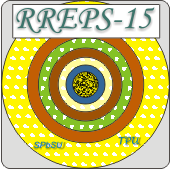Speaker
Dr
Alexander Aryshev
(High Energy Accelerator Research Organization (KEK), Tsukuba, Japan)
Description
The motivation for developing linac-based THz source is coming from the growing interest to THz radiation. High gradient photo-cathode RF gun and few tens of femtosecond laser system are used to generate a pre-bunched electron beam. We have proposed two approaches to produce the intense radiation beams in the range of 0.1-5 THz based on Coherent Smith-Purcell Radiation (CSPR) and Coherent Undulator Radiation (CUR) in “super-radiant” regime on 8 MeV and 30 MeV electron beam at KEK LUCX accelerator, respectively. CSPR is generated when a charged particle moves in the vicinity of a periodical pattern or grating. The grating type and period can be chosen to make quasi-monochromatic CSPR spectrum. When radiation wavelength is comparable to or longer than the bunch length it becomes coherent and even more it enters a “super-radiant” regime if micro-bunch spacing became comparable with radiation wavelength and comparable to the grating period. Similar radiation enhancement can be obtained when micro-bunch period coincided with undulator period. In this report the status of experiment, comb electron beam generation, CSPR and CUR achievable characteristics will be discussed.
This work is supported by Photon and Quantum Basic Research Coordinated Development Program from the Ministry of Education, Culture, Sports, Science and Technology, Japan and JSPS KAKENHI grant number 23226020.
Author
Dr
Alexander Aryshev
(High Energy Accelerator Research Organization (KEK), Tsukuba, Japan)
Co-authors
Junji urakawa
(High Energy Accelerator Research Organization (KEK), Tsukuba, Japan)
Masafumi Fukuda
(High Energy Accelerator Research Organization (KEK), Tsukuba, Japan)
Mikhail Shevelev
(High Energy Accelerator Research Organization (KEK), Tsukuba, Japan)
Nobuhiro Terunuma
(High Energy Accelerator Research Organization (KEK), Tsukuba, Japan)
Yosuke Honda
(High Energy Accelerator Research Organization (KEK), Tsukuba, Japan)
